Telerehabilitation for people with low vision
- PMID: 36637057
- PMCID: PMC9837841
- DOI: 10.1002/14651858.CD011019.pub4
Telerehabilitation for people with low vision
Abstract
Background: Low vision affects over 300 million people worldwide and can compromise both activities of daily living and quality of life. Rehabilitative training and vision assistive equipment (VAE) may help, but some visually impaired people have limited resources to attend in-person visits to rehabilitation clinics to be trained to learn to use VAE. These people may be able to overcome barriers to care through access to remote, internet-based consultation (telerehabilitation).
Objectives: To compare the effects of telerehabilitation with face-to-face (e.g. in-office or inpatient) vision rehabilitation services for improving vision-related quality of life and near reading ability in people with visual function loss due to any ocular condition. Secondary objectives were to evaluate compliance with scheduled rehabilitation sessions, abandonment rates for VAE devices, and patient satisfaction ratings.
Search methods: We searched the Cochrane Central Register of Controlled Trials (CENTRAL), which contains the Cochrane Eyes and Vision Trials Register) (2021, Issue 9); Ovid MEDLINE; Embase.com; PubMed; ClinicalTrials.gov; and the World Health Organization (WHO) International Clinical Trials Registry Platform (ICTRP). We did not use any language restriction or study design filter in the electronic searches; however, we restricted the searches from 1980 onwards because the internet was not introduced to the public until 1982. We last searched CENTRAL, MEDLINE Ovid, Embase, and PubMed on 14 September 2021, and the trial registries on 16 March 2022.
Selection criteria: We included randomized controlled trials (RCTs) or controlled clinical trials (CCTs) in which participants diagnosed with low vision had received vision rehabilitation services remotely from a human provider using internet, web-based technology compared with an approach involving in-person consultations.
Data collection and analysis: Two review authors independently screened titles and abstracts retrieved by the searches of the electronic databases and then full-text articles for eligible studies. Two review authors independently abstracted data from the included studies. Any discrepancies were resolved by discussion.
Main results: We identified one RCT/CCT that indirectly met our inclusion criteria, and two ongoing trials that met our inclusion criteria. The included trial had an overall high risk of bias. We did not conduct a quantitative analysis since multiple controlled trials were not identified. The single included trial of 57 participants utilized a parallel-group design. It compared 30 hours of either personalized low vision training through telerehabilitation with a low vision therapist (the experimental group) with the self-training standard provided by eSight using the eSkills User Guide that was self-administered by the participants at home for one hour per day for 30 days (the comparison group). The trial investigators found a similar direction of effects for both groups for vision-related quality of life and satisfaction at two weeks, three months, and six months. A greater proportion of participants in the comparison group had abandoned or discontinued use of the eSight Eyewear at two weeks than those in the telerehabilitation group, but discontinuance rates were similar between groups at one month and three months. We rated the certainty of the evidence for all outcomes as very low due to high risk of bias in randomization processes and missing outcome data and imprecision. AUTHORS' CONCLUSIONS: The included trial found similar efficacy between telerehabilitation with a therapist and an active control intervention of self-guided training in mostly younger to middle-aged adults with low vision who received a new wearable electronic aid. Given the disease burden and the growing interest in telemedicine, the two ongoing studies, when completed, may provide further evidence of the potential for telerehabilitation as a platform for providing services to people with low vision.
Copyright © 2023 The Cochrane Collaboration. Published by John Wiley & Sons, Ltd.
Conflict of interest statement
One reason for conducting this systematic review was to establish a knowledge base to guide the design of future randomized controlled trials to evaluate the efficacy of telerehabilitation for a primarily elderly, visually impaired population. Along with this systematic review, Dr Tianjing Li has received funding to collect pilot data to demonstrate the feasibility of using telerehabilitation as a platform for delivering low vision rehabilitation services. The systematic review and the pilot data collected will lay the foundation for preparing randomized controlled trial applications.
Dr Bittner has received funding from the National Eye Institute, National Institutes of Health; the American Academy of Optometry Foundation; and Envision Research Institute to conduct pilot studies and randomized controlled trials of telerehabiliation for low vision, for which Dr Yoshinaga is a co‐investigator.
TR has no conflicts of interest to declare.
Figures
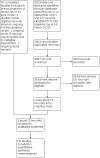
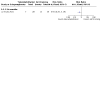
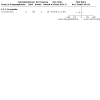
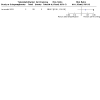
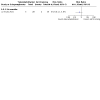


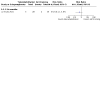

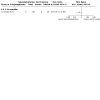
Update of
-
Telerehabilitation for people with low vision.Cochrane Database Syst Rev. 2020 Feb 27;2(2):CD011019. doi: 10.1002/14651858.CD011019.pub3. Cochrane Database Syst Rev. 2020. Update in: Cochrane Database Syst Rev. 2023 Jan 13;1:CD011019. doi: 10.1002/14651858.CD011019.pub4. PMID: 32102114 Free PMC article. Updated.
Similar articles
-
Telerehabilitation for people with low vision.Cochrane Database Syst Rev. 2015 Aug 31;8:CD011019. doi: 10.1002/14651858.CD011019.pub2. Cochrane Database Syst Rev. 2015. Update in: Cochrane Database Syst Rev. 2020 Feb 27;2:CD011019. doi: 10.1002/14651858.CD011019.pub3. PMID: 26329308 Free PMC article. Updated.
-
Reading aids for adults with low vision.Cochrane Database Syst Rev. 2018 Apr 17;4(4):CD003303. doi: 10.1002/14651858.CD003303.pub4. Cochrane Database Syst Rev. 2018. PMID: 29664159 Free PMC article.
-
Interventions for eye movement disorders due to acquired brain injury.Cochrane Database Syst Rev. 2018 Mar 5;3(3):CD011290. doi: 10.1002/14651858.CD011290.pub2. Cochrane Database Syst Rev. 2018. PMID: 29505103 Free PMC article.
-
Perioperative medications for preventing temporarily increased intraocular pressure after laser trabeculoplasty.Cochrane Database Syst Rev. 2017 Feb 23;2(2):CD010746. doi: 10.1002/14651858.CD010746.pub2. Cochrane Database Syst Rev. 2017. PMID: 28231380 Free PMC article.
-
Prognosis of adults and children following a first unprovoked seizure.Cochrane Database Syst Rev. 2023 Jan 23;1(1):CD013847. doi: 10.1002/14651858.CD013847.pub2. Cochrane Database Syst Rev. 2023. PMID: 36688481 Free PMC article.
Cited by
-
Topical Review: Clinical, Physiological, and Functional Benefits of Home-based Telerehabilitation with Occupational Therapists for Low Vision.Int J Telerehabil. 2025 Jun 12;17(1):6703. doi: 10.63144/ijt.2025.6703. eCollection 2025. Int J Telerehabil. 2025. PMID: 40575145 Free PMC article. Review.
-
Assessing the Effectiveness of Rehabilitation Interventions through the World Health Organization Disability Assessment Schedule 2.0 on Disability-A Systematic Review.J Clin Med. 2024 Feb 22;13(5):1252. doi: 10.3390/jcm13051252. J Clin Med. 2024. PMID: 38592067 Free PMC article. Review.
-
Evidence-based position paper on Physical and Rehabilitation Medicine (PRM) professional practice on telerehabilitation. The European PRM position (UEMS PRM Section).Eur J Phys Rehabil Med. 2024 Apr;60(2):165-181. doi: 10.23736/S1973-9087.24.08396-5. Epub 2024 Mar 13. Eur J Phys Rehabil Med. 2024. PMID: 38477069 Free PMC article.
-
Enhancing the Functional Performance of Patients with Late-Stage Age-Related Macular Degeneration Implanted with a Miniature Telescope using Rehabilitation Training.Ophthalmol Ther. 2024 Mar;13(3):697-707. doi: 10.1007/s40123-023-00871-1. Epub 2024 Jan 2. Ophthalmol Ther. 2024. PMID: 38165600 Free PMC article.
-
Outcomes of Telerehabilitation Versus In-Office Training With Magnification Devices for Low Vision: A Randomized Controlled Trial.Transl Vis Sci Technol. 2024 Jan 2;13(1):6. doi: 10.1167/tvst.13.1.6. Transl Vis Sci Technol. 2024. PMID: 38214688 Free PMC article. Clinical Trial.
References
References to studies included in this review
Lorenzini 2021 {published data only}
References to studies excluded from this review
Al‐Moujahed 2021 {published data only}
Amore 2018 {published data only}
-
- Amore FM, Silvestri V, Sulfaro M, Piscopo P, Sasso P. Evaluation of a wearable optical-digital assistive device with multiple applications for visually impaired. Investigative Ophthalmology and Visual Science 2018;59:5173.
Battistin 2021 {published data only}
Battistin 2021a {published data only}
-
- Battistin T, Da Riva E, Zanardo V, Lanners J, Mercuriali E, Reffo ME. A new way of supporting visually impaired children and their families during the Covid-19 pandemic. Developmental Medicine and Child Neurology 2021;63(Suppl 2):55.
Bittner 2018 {published data only}
-
- Bittner AK, Khan R. Feasibility of using Bluetooth beacon sensors to monitor usage of hand-held low vision devices at home. Investigative Ophthalmology and Visual Science 2018;59:641.
Bittner 2018a {published data only}
-
- Bittner AK, Jacobson AJ, Khan R. Feasibility of using Bluetooth low energy beacon sensors to detect magnifier usage by low vision patients. Optometry and Vision Science 2018;95(9):844-51. - PubMed
Callisaya 2021 {published data only}
Chang 2020 {published data only}
Chia 2021 {published data only}
-
- Chia ZK, Turner ML, Kong AW, Backus BT, Deiner M, Ou Y. Remote training and administration of a portable virtual reality-based visual field test for home testing during COVID-19. Investigative Ophthalmology and Visual Science 2021;62:1766.
Deemer 2020 {published data only}
-
- Deemer A, Fujiwara K, Bradley C, Deremeik J, Chun R, Werblin F, et al. Usage of head-mounted video display (HMD) systems during a comparative study home trial. Investigative Ophthalmology & Visual Science 2020;61:930.
Gothwal 2018 {published data only}
Islam 2020 {published data only}
-
- Islam M, Sim DA, Bachmann LM. Home monitoring for patients with diabetic macula oedema: My doctor knows how I'm seeing every day. Investigative Ophthalmology and Visual Science 2020;61:1591.
Kang 2020 {published data only}
Maeng 2018 {published data only}
-
- Maeng M, Seiple WH, Jackson C, Randolph K, Szlyk JP. Comparative effectiveness of a self-guided eye movement reading training program: clinic vs. home. Investigative Ophthalmology and Visual Science 2018;59:629.
Mintz 2020 {published data only}
Morjaria 2020 {published data only}
-
- Morjaria P, Bastawrous A, Murthy GVS, Evans J, Sagar MJ, Pallepogula DR, et al. Effectiveness of a novel mobile health (Peek) and education intervention on spectacle wear amongst children in India: results from a randomized superiority trial in India. eClinicalMedicine 2020;28:100594. - PMC - PubMed
NCT04238065 {published data only}
-
- NCT04238065. A clinical trial of virtual reality visual function training and treatment software for children with amblyopia. clinicaltrials.gov/ct2/show/NCT04238065 (first received 23 January 2020).
NCT04391166 {published data only}
-
- Center Vanderbilt University Medical. Validity of at home visual acuity measurements for telemedicine during corona virus (COVID-19) pandemic. clinicaltrials.gov/show/NCT04391166 (first received 18 May 2020).
NCT04685824 {published data only}
-
- NCT04685824. Visual rehabilitation in AMD. clinicaltrials.gov/show/NCT04685824 (first received 28 December 2020).
NCT04736264 {published data only}
-
- NCT04736264. Malay glaucoma eye study ii navigation, mobility and reading ability in primary glaucoma. clinicaltrials.gov/show/NCT04736264 (first received 3 February 2021).
NCT04926974 {published data only}
-
- NCT04926974. Community Access Through Remote Eyesight (CARE) Study. clinicaltrials.gov/show/NCT04926974 (first received 15 June 2021).
Oeverhaus 2020 {published data only}
Salazar 2021 {published data only}
-
- Salazar D, Niziol LM, Woodward MA, Elam A, Musch D, Johnson L, et al. The Michigan screening and intervention for glaucoma and eye health through telemedicine program (mi-sight): initial cohort characteristics. Investigative Ophthalmology and Visual Science 2021;62:1610.
Schmiedecke‐Barbieri 2020 {published data only}
-
- Schmiedecke-Barbieri S, Valdes M. Low-vision rehabilitation: then, now, and tomorrow. Advances in Ophthalmology and Optometry 2020;5:25-37.
Senjam 2021 {published data only}
Thompson 2019 {published data only}
-
- Thompson J, Cherneski L, Menon A, Lebeaut A, Seitz A, Butler P, et al. Evaluation of a visual remediation intervention for schizophrenia. Schizophrenia Bulletin 2019;45:S264.
van der Aa 2017 {published data only}
-
- NTR6082. E-mental health treatment for patients with eye diseases (E-PsEYE): pilot study [E-mental health intervention for patients with retinal exudative diseases (E-PsEYE) who receive intra-ocular anti-VEGF injections: pilot study]. www.trialregister.nl/trial/5894 (first received 6 September 2016).
-
- NTR6337. E-mental health treatment for patients with eye diseases (E-PsEYE): RCT [Economic evaluation of an e-mental health intervention for patients with retinal exudative diseases (E-PsEYE) who receive intra-ocular anti-VEGF injections: RCT]. apps.who.int/trialsearch/Trial2.aspx?TrialID=NTR6337 (first received 13 April 2017).
-
- Aa HPA, Rens GHMB, Verbraak FD, Bosscha M, Koopmanschap MA, Comijs HC, et al. Economic evaluation of an e-mental health intervention for patients with retinal exudative diseases who receive intraocular anti-VEGF injections (E-PsEYE): protocol for a randomised controlled trial. BMJ Open 2017;7(11):e018149. - PMC - PubMed
van der Aa 2020 {published data only}
-
- Aa HPA, Rens GHMB, Nassau F, Nispen RMA. E-mental health for patients who receive anti-VEGF treatment: a qualitative study on the perceived barriers and facilitators in secondary care stakeholders. Acta Ophthalmologica 2020;98(Suppl 264):16.
References to ongoing studies
NCT03957980 {published data only}
-
- NCT03957980. Remote access: cortical visual impairment [Remote access to care for children with cortical visual impairment and their families]. clinicaltrials.gov/show/NCT03957980 (first received 21 May 2019).
NCT04066075 {published data only}
-
- NCT04066075. Beacon sensors and telerehabilitation for low vision. clinicaltrials.gov/show/NCT04066075 (first received 26 August 2019).
Additional references
Binns 2012
-
- Binns AM, Bunce C, Dickinson C, Harper R, Tudor-Edwards R, Woodhouse M, et al. How effective is low vision service provision? A systematic review. Survey of Ophthalmology 2012;57(1):34-65. - PubMed
Bittner 2018
-
- Bittner AK, Yoshinaga P, Bowers A, Shepherd JD, Succar T, Ross NC. Feasibility of telerehabilitation for low vision: satisfaction ratings by providers and patients. Optometry and Vision Science 2018;95(9):865-72. - PubMed
Brennan 2011
-
- Brennan DM, Tindall L, Theodoros D, Brown J, Campbell M, Christiana D, et al. A blueprint for telerehabilitation guidelines—October 2010. Telemedicine and e-Health 2011;17(8):662-5. - PubMed
Chan 2018
Covidence [Computer program]
-
- Covidence. Version accessed 6 July 2019. Melbourne, Australia: Veritas Health Innovation. Available at covidence.org.
Crossland 2014
-
- Crossland MD, Silva RS, Macedo AF. Smartphone, tablet computer and e-reader use by people with vision impairment. Ophthalmic and Physiological Optics 2014;34(5):552-7. - PubMed
Deeks 2022
-
- Deeks JJ, Higgins JP, Altman DG. Chapter 10: Analysing data and undertaking meta-analyses. In: Higgins JP, Thomas J, Chandler J, Cumpston M, Li T, Page MJ, Welch VA, editor(s). Cochrane Handbook for Systematic Reviews of Interventions Version 6.3 (updated February 2022). Cochrane, 2022. Available from www.training.cochrane.org/handbook.
Foster 2008
Goldstein 2012
GRADEpro GDT [Computer program]
-
- GRADEpro GDT. Version accessed 23 January 2020. Hamilton (ON): McMaster University (developed by Evidence Prime), 2021. Available at gradepro.org.
Higgins 2020
-
- Higgins JP, Thomas J, Chandler J, Cumpston M, Li T, Page MJ, et al, editor(s). Cochrane Handbook for Systematic Reviews of Interventions Version 6.1 (updated September 2020). Cochrane, 2020. Available from www.training.cochrane.org/handbook.
Higgins 2021
-
- Higgins JP, Savović J, Page MJ, Elbers RG, Sterne JAC. Chapter 8: Assessing risk of bias in a randomized trial. In: Higgins JP, Thomas J, Chandler J, Cumpston M, Li T, Page M, Welch V, editor(s). Cochrane Handbook for Systematic Reviews of Interventions Version 6.2 (updated February 2021). Cochrane, 2021. Available from training.cochrane.org/handbook/archive/v6.2.
Ihrig 2019
Lamoureux 2008
-
- Lamoureux EL, Chong E, Wang JJ, Saw SM, Aung T, Mitchell P, et al. Visual impairment, causes of vision loss, and falls: the Singapore Malay Eye Study. Investigative Ophthalmology and Visual Science 2008;49(2):528-33. - PubMed
Madden 2002
-
- Madden AC, Simmons D, McCarty CA, Khan MA, Taylor HR. Eye health in rural Australia. Clinical and Experimental Ophthalmology 2002;30(5):316-21. - PubMed
Markowitz 2006
-
- Markowitz SN. Principles of modern low vision rehabilitation. Canadian Journal of Ophthalmology 2006;41(3):289-312. - PubMed
Murthy 2012
-
- Murthy KR, Murthy PR, Kapur A, Owens DR. Mobile diabetes eye care: experience in developing countries. Diabetes Research and Clinical Practice 2012;97(3):343-9. - PubMed
NEI glossary
-
- National Eye Institute, National Institutes of Health. Low vision glossary. www.nei.nih.gov/lowvision/content/glossary.asp (accessed 13 August 2013).
Prathiba 2011
Review Manager 2020 [Computer program]
-
- Review Manager 5 (RevMan 5). Version 5.4. Copenhagen: The Cochrane Collaboration, 2020.
Rogante 2010
-
- Rogante M, Grigioni M, Cordella D, Giacomozzi C. Ten years of telerehabilitation: a literature overview of technologies and clinical applications. NeuroRehabilitation 2010;27(4):287-304. - PubMed
Stelmack 2008
-
- Stelmack JA, Tang XC, Reda DJ, Rinne S, Mancil RM, Massof RW, et al. Outcomes of the Veterans Affairs Low Vision Intervention Trial (LOVIT). Archives of Ophthalmology 2008;126(5):608-17. - PubMed
Tang 2005
-
- Tang RA, Morales M, Ricur G, Schiffman JS. Telemedicine for eye care. Journal of Telemedicine and Telecare 2005;11(8):391-6. - PubMed
Turner 2012
Van den Berg 2012
-
- Van den Berg N, Schumann M, Kraft K, Hoffmann W. Telemedicine and telecare for older patients—a systematic review. Maturitas 2012;73(2):94-114. - PubMed
Watson 1997
-
- Watson GR, De L'Aune W, Stelmack J, Maino J, Long S. National survey of the impact of low vision device use among veterans. Optometry and Vision Science 1997;74(5):249-59. - PubMed
WHO low vision definition
-
- World Health Organization. Priorities and objectives—What do we want to achieve? Chapter 3.5.4 Low vision. www.who.int/ncd/vision2020_actionplan/contents/3.5.4.htm (accessed 13 August 2013).
References to other published versions of this review
Bittner 2014
-
- Bittner AK, Wykstra SL, Yoshinaga PD, Li T. Telerehabilitation for people with low vision. Cochrane Database of Systematic Reviews 2014, Issue 3. Art. No: CD011019. [DOI: 10.1002/14651858.CD011019] - DOI
Bittner 2015
Publication types
MeSH terms
Grants and funding
LinkOut - more resources
Full Text Sources
Medical
Miscellaneous

